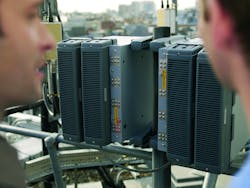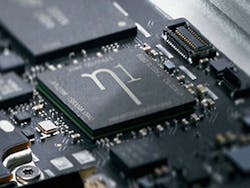For years, wireless chipmakers have stayed in business by making circuits smaller and less likely to generate crippling heat. But power amplifiers, which turn electricity into radio signals, have always resisted big improvements.
That could explain the growing number of start-ups trying to make power amplifiers not only more efficient but easier to plug into existing circuits. And the wireless industry has taken notice.
Nokia said last week that it was buying Eta Devices, a start-up based in Massachusetts that has created a new design for power amplifiers, one that conserves more energy than it wastes. The company claims that its technology cuts the power consumption of cell stations in half and doubles the battery life of smartphones.
The chipmaker, which was founded by electrical engineers from the Massachusetts Institute of Technology, has developed a new way of managing the huge amount of power wasted by smartphones when streaming video or downloading apps – and cell stations when transferring large files or connecting to thousands of devices.
Nokia, which builds the radio equipment used inside cell stations, did not reveal the terms of the deal.
The acquisition follows Nokia's strategy to lower the power consumption of its radio equipment, which the company is increasingly using in small cells instead of traditional radio towers. Last year, the company introduced power management software and new antennas that it said could reduce power consumption in cell stations by %70.
Eta Devices says that its power amplifiers are efficient enough to eliminate the need for backup power and bulky air conditioners, allowing for smaller cell station cabinets. The company says that its power management technology can be linked to other power amplifiers to improve efficiency.
Eta Devices was founded by two electrical engineering professors, Joel Dawson and David Perrault, in 2010. After two years of laying out blueprints for the new amplifiers, they received $6 million in funding from Ray Stata, one of the engineers that founded Analog Devices. Eta Devices now employs 20 people.
Dawson and Perrault, who enlisted a former Ericsson engineer to help with the power amplifier's design, describe their technology as an electronic gearbox. It sifts through different voltages sent across the chip’s transistors and chooses one that minimizes power consumption. The company calls the process asymmetric multilevel outphasing.
Before it revealed the new power amplifiers in 2012, the company planned to sell its products in developing countries, where cell stations were often powered by diesel generators and more efficient parts could save fuel. Nokia has also signaled its willingness to install equipment in rural areas, partnering with Facebook’s Telecom Infra Project to create new radio hardware that connects isolated communities to the internet.
Lowering power consumption in cell stations could also help cut costs for wireless carriers. That could be an important selling point for equipment makers like Nokia, which are competing for tighter profits as spending on fourth-generation wireless technology slows. Nokia’s competitors are feeling the strain: last week, Ericsson said that it was cutting 3,000 employees in its home country of Sweden.
About the Author

James Morra
Senior Editor
James Morra is the senior editor for Electronic Design, covering the semiconductor industry and new technology trends, with a focus on power electronics and power management. He also reports on the business behind electrical engineering, including the electronics supply chain. He joined Electronic Design in 2015 and is based in Chicago, Illinois.



